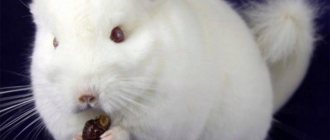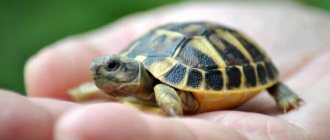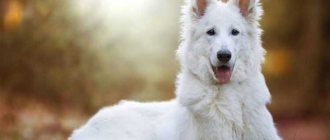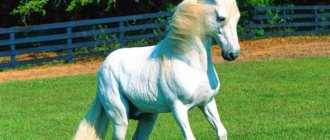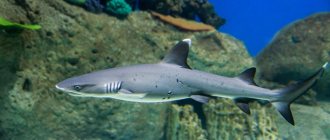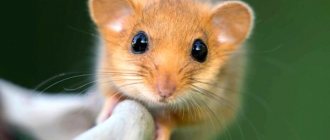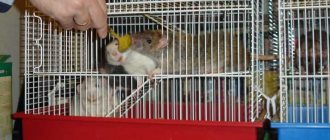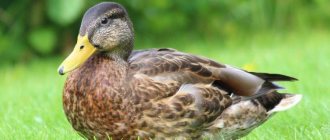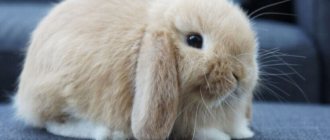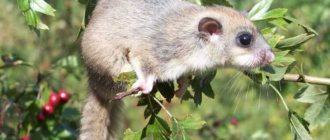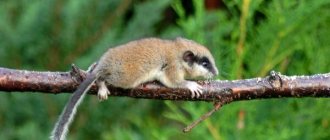Dormouse family
All species in this family have a similar structure of bodies and organs . All dormouse are united by large dark eyes, rounded ears and long antennae. The fur of all animals is fluffy and soft. The tail is quite long and also covered with hair.
Dormouses mostly live in trees. If there are no large trees nearby, then dormouse can live in the branches of bushes. At the same time, there are species of dormouse that prefer to be on the ground most of the time.
Gardeners consider some varieties of these animals to be pests. The fact is that rodents can cause quite significant damage to gardens and berry fields. However, it is not so serious that farmers begin to consider dormouse as the enemy of man.
Three species of these animals live in Russia
- Hazel dormouse.
- Sadovaya
- Forest and dormouse.
Dormouses are very interesting to watch. They are quite funny, attractive, harmless, and long-lived compared to other rodents. It would seem that they should be kept at home as pets, but this does not happen. Why? It's all about the sleepyhead's lifestyle. Animal lovers are well aware of these animals, but acquire them quite rarely, since dormouse become active in nature only at night. Who has the desire to watch rodents instead of a healthy sleep? That's why there are very few dormouse on sale. But these animals can change their lifestyle, adapting to the life rhythm of their owners when kept in a cage, but few people know about this.
Population and species status
Nowadays, the forest dormouse is a rare animal, so it is listed in the Red Books of the Kursk, Oryol, Tambov and Lipetsk regions. This animal is listed on the IUCN Red List and is therefore internationally protected by the Vienna Convention.
The forest dormouse is a unique animal that is on the verge of extinction, like many other species of wildlife. It is difficult to say what factors had a decisive influence, but most likely this is due to human activity, which deprives these animals of their natural habitats, destroying forest areas for various purposes. If we add to this the unfavorable environmental situation, we get a completely depressing picture.
Forest Dormouse
A little about the life of sleepyheads
Externally, dormouse resembles squirrels .
Despite the fact that they are active mostly at night, in the daytime these animals see no worse than in the dark. Nature has endowed the dormouse not only with excellent vision, but also with a special skeleton capable of shrinking in the vertical direction, which allows the animals to crawl through the narrowest cracks in tree trunks and get to the safest places for resting and building nests. This is a very important quality of these rodents, ensuring their survival.
When dormice go out in search of food, they rely heavily on their own hearing . Round, fairly large ears serve as locators. They constantly change their position on the animal's head. In this case, the ears move independently of each other. The largest “locators” are those of the garden dormouse. Her photo can be found on the Internet. The second largest ears are the hazel dormouse. Third place was shared by the dormouse and the forest dormouse. Photos of these cute creatures can also be found on the Internet.
Dormouses feed mainly on solid food. Above we compared them with proteins. This comparison is especially noticeable when the dormouse is eating. She, like a squirrel, holds food with her front paws and quickly rotates it. Such actions allow the rodent to quickly open various seeds and nuts. Sonya literally cuts the shell with her sharp incisors.
Unlike most other rodents, dormice cannot be called fertile animals . They mature for breeding late, their litter never contains more than 5 cubs, and they mate only twice a year. It would seem that such conditions should threaten the dormouse population, but in reality everything is a little different. Females have a very strong maternal instinct. They carefully care for each cub. Combine this with good health and a long lifespan, and you get a stable population whose safety is not threatened.
Sleepless in a cage
1K 5 min.
Someday you will ask a maiden screaming heart-rendingly at the sight of a rat or mouse, why is she actually screaming like that? And she yells, it turns out, mostly because she is disgusted to look at “that disgusting long naked tail”! Well, each of us has our own phobias; the lady doesn’t want to see bare tails - offer her a fluffy tail attached to the African dormouse, a creature so charming that the most ardent opponent of small rodents cannot resist it. Everything about this dormouse is so charming—brilliant eyes, funny ears, fluffy gray fur, and a touching meek expression on her face—that you just want to hug her to your chest and cover her with kisses. But Sonya herself is unlikely to like all these familiarities, because she is so fragile and timid. And small - about a dozen centimeters in length and about 50 grams in weight, the African dormouse is three times smaller than the meanest Syrian hamster, so, probably, you shouldn’t use particularly violent caresses on it.
Photo: DIOMEDIA
In fact, there are quite a lot of dormouse in the world, but African dormouse is one of the cutest and most unpretentious. As the name suggests, the African dormouse (Graphiurus) is native to Africa and lives in sub-Saharan Africa. So it wasn’t for nothing that they called it African; But why was she called Sonya? Does she sleep that much? No, she sleeps like everyone else, she just does it during the day, and at night the sleepyhead is very nimble. Apparently, the tireless naturalists who at one time explored the fauna of the wilds of Africa were not fools when it came to sleeping, they only slept at night, so the twilight activity of little dormouse somehow escaped their attention. Yes - and even during a drought, the dormouse can fall into deep torpor, that is, into hibernation. But this is not necessary for her, and living in captivity, where she always has a lot of food and there are no temperature extremes, she usually neglects hibernation. However, if for some reason someone absolutely needs to put the dormouse into hibernation - for example, the owner is leaving and thinks that it will be better this way - she needs to be prepared for this for a long time: feed her better so that she accumulates fat, gradually lower the temperature... And remember The fact is that the dormouse may not come out of hibernation, so in fact it’s better not to experiment with this and just give the dormouse to kind people during your absence: caring for this animal is not very difficult, any normal adult can handle it.
Most other rodents—mice, rats, rabbits, hamsters—before becoming pets, served science as experimental animals for generations. Yes, they were tortured en masse in laboratories, and this is terribly tragic, but the surviving descendants of vivisection victims managed to get used to people and became highly domesticated. The fate of African dormouses was not so sad, and they came to our homes not from laboratories, but directly from the wild, and this happened relatively recently: dormouses appeared in Russia 15-20 years ago, they began to be kept in the world a little earlier, but not by much. This means that African dormouse, even if born in captivity, in essence still remain uncivilized, natural and even wild creatures - they live their own lives, are interested exclusively in their own affairs and do not insist on close contacts with people. And even on the contrary, they resist these contacts in every possible way - most sleepyheads are not happy when people start squeezing them, they may well bite the cheeky one. And they bite very sensitively, because this half-palm-sized little thing is equipped with the serious teeth of a real rodent. Well, if you absolutely need to come into close physical contact with your pet, then you should get one sleepyhead, and a very young one and better than a male one - their boys are usually kinder, lazier and more affectionate, they can easily run around in their master’s hands and sits solidly on the palm. Female dormouse, as a rule, is much more harmful - it seems that she will walk on your hand, but along the way she will certainly try to bite that hand, so if for some reason you still need to pick up a dormouse, it is better to carefully grab her by the scruff of the neck. In addition, nimble sleepyheads strive to break free and run away, and looking for a tiny animal in a house filled with things is a futile task. True, if a boy runs away, you can catch him - these harsh males value their territory very much and sometimes return to the place of escape at night. And if you set a trap there - for example, a slightly tilted glass jar with a treat, then a hungry man will climb inside, but will not be able to get out through the slippery glass. Well, a cunning girl rarely falls into such elementary traps, so it’s not often possible to catch a runaway female sleepyhead, and no one knows where she goes. True, if the apartment is cool, you can look for the sleepyhead on the radiator - what if she decides to take a nap there? Because of such agility and craving for freedom, it is not very wise to let the dormouse roam around the house - well, unless it is a very tame male, and even then under constant supervision. True, there are craftsmen who give their sleepyheads a walk by making them something like a harness out of thread, but what’s the point? Sonya can get some exercise in a cage too.
The dormouse, of course, will not come when called - she does not want to know her name, and they usually do not show any special love for their owners. Sleepyheads are deeply indifferent to other pets - you never know who wanders past their cage! But it’s better not to take a dormouse into a house where children live - dormouses are so cute that it’s rare that a child will be able to restrain himself from grabbing his little paw. Well, then everything goes according to the script: the child’s little paw bites, he either squeezes it tighter and breaks something, or drops it, the little paw runs away - and goodbye, dear friend.
In a word, if you need a dormouse for tender friendship, take a lonely male and communicate with him as much as possible. Well, if you just want to observe the life and fate of these cute creatures, take four or five things and admire their nightly flickering: sleepless dormouse are unusually nimble and can be so swift that the dormouse as such is practically not visible - so, something flashed gray, waved its tail and rushed off about its business. And in order for the dormouse to have somewhere to run, their spacious cage (or vertical terrarium) must have a lot of all kinds of branches, sticks and snags: in the wild, dormouse mostly jump through trees, although they can also walk on the ground better than many.
It would be useful to have a house in their cage. It’s possible - two houses, but it happens that the sleepyheads will all sleep together in one, and the other will be turned into a public toilet. However, they will turn a lot of things into a toilet - they will happily do their business on the roof of their bedroom, and on all the branches and snags, and generally wherever they have to. Fortunately, all this is easy to clean and has virtually no odor; The only thing that can smell in a cage is spoiled food, but you shouldn’t be lazy about cleaning it up on time.
In places where they live freely, dormouse often destroy gardens and vegetable gardens, for which local peasants do not like them very much. In captivity, it is not at all difficult to feed them: seeds, nuts, fruits, insect eggs, pieces of chicken, puppy food, a little unsweetened yogurt, baby cottage cheese - everything is good for sleepyheads. In addition, it is quite possible to check the quality of products on these smart kids: if a piece of banana or cottage cheese given out in the evening lay untouched until the morning, it means that it is full of all sorts of chemicals and other nasty things, and this is also not useful for people. Yes, sleepyheads are very careful about the quality of their food, and, as a rule, they will not want to eat anything inedible. Therefore, it is quite possible to put a decorative artificial flower in their cage or cover the bottom of the cage with a plastic lawn - yes, they will certainly stain it all and tear it into small fragments, but they will not swallow these fragments, but will take them into the house and arrange them in accordance with their aesthetic needs.
Sleepyheads don’t need toys, they have other joys: gnawing something or tearing it into pieces is what they like. They can gnaw a hole in a house - if they are not satisfied with the entrance that they already have; Yes, that house - another tiny, but especially zealous dormouse can even gnaw through the metal mesh of its cage - that’s why many advise placing these rodents in a terrarium, yet they are unlikely to be able to pierce glass.
There is no need to wash or comb the dormouse; they take excellent care of themselves. They live in captivity for about six years, they usually don’t complain about their health, so they don’t require any special care other than cleaning the cage. And the cage does not need to be cleaned every day, but as needed - every day you just need to take away yesterday’s food and make sure that the clever sleepyheads do not escape from their cage.
Yes, the most important thing is that it only makes sense to have a sleepyhead for people who are prone to a nocturnal lifestyle, otherwise the owners will too rarely interact with their pets, and this is a shame. And you can buy an African dormouse (for 2,000 rubles), for example, from a breeder who answers by phone (499) 476 2264.
Olga Volkova
Dormouse content
Keeping a dormouse at home is no more difficult than other decorative rodents.
You just need to remember that these animals require an all-metal cage with a very durable tray. It is desirable that it also be made of metal. These rodents will destroy plastic in five seconds. You can buy a similar cage. True, such models suitable for keeping dormouse appear on sale quite rarely, so the cage is most often made to order or made by hand. If desired, the cage can be replaced with a spacious terrarium. The main thing is that it is well ventilated. A dormice cage must have a nipple drinker and a feeder . These rodents drink and eat a lot. It is best to purchase drinkers and feeders made of metal, since dormouse will certainly chew other materials.
The bedding for dormouse can be made of sawdust or granulated wood. The cage must have a secluded corner in which the rodent could hide. This is very important, because dormice sleep only in a shelter. You can use a wooden house or a cardboard box as a secluded corner. The last option is cheap, but short-lived. Rodents will quickly make short work of the box.
Due to their metabolic characteristics, sleepyheads are prone to overeating and accumulation of fat reserves. Naturally, excess weight poses a threat to the health of rodents. This means that we need to provide them with the opportunity to actively move. To do this, you need to install floors, shelves, ladders and other elements in the cage so that the animals can run along them.
Sonya is very clean . They spend a lot of time cleaning their fur. They need to be kept clean. Change the bedding in the cage regularly. Wash the feeders and change the water in the drinking bowl at least once every 2 days.
The rodent cage should be located in a room with sufficient natural light. The height of the cage is at human eye level.
Where is the African dormouse found and what does it look like?
African dormouse are native to Africa, and outside of the northern part of the continent this is their natural range. They live mainly in the canopy of trees and, like herd animals, live in groups of up to a dozen individuals. Like pygmy hedgehogs, they are nocturnal and spend the day curled up in hollows or holes. Sonya lives from three to six years.
These are rodents whose size does not exceed eight cm (together with a fluffy tail, which makes up half of the body, they can reach 16 cm).
Graphiurus murinus has characteristic large black eyes and prominent ears that give it a mouse-like appearance. Its fur is gray except for its white underbelly. The area around the nose, around which the long whiskers grow, is pink.
Types of dormouse
As mentioned above, there are three types of dormouse in our country. Rodents of all these species can be kept at home as pets, but before deciding to take such a step, it is advisable to learn about the characteristics of each species.
Hazel Dormouse
Rodents of this species are the smallest in size - no more than 10 centimeters. In nature, hazel dormouse live in bushes. Most often this is hazel, dogwood or hawthorn .
In their branches they build quite strong nests from grass and leaves. The hazel dormouse can also settle in trees if it manages to find a suitable unoccupied hollow. If an unoccupied birdhouse turns up, the dormouse will certainly settle in it.
By the way, the hazel dormouse lives in bushes and trees only in the warm season. In winter, she prefers to sleep in a cozy hole located near the roots of trees.
At home, hazel dormouse should be kept in high cages. This is explained by the fact that animals love to climb. In such a cage you need to put not one, but several houses. A variety of resting places significantly increases the animal’s comfort of life.
The hazel dormouse needs to be fed with a grain mixture. Various nuts and sweets can be given as treats.
The hazel dormouse is quite difficult to keep at home for the following reasons:
- She is very small and nimble. If the animal gets scared and runs away, it will be very difficult to catch it and return it to its cage.
- The hazel dormouse has a rather specific smell. Therefore, you will have to clean the cage much more often. These rodents are contraindicated for allergy sufferers.
- This type of dormouse needs to be regularly fed with insects.
garden dormouse
This species is considered the most beautiful. They have a black “mask” on their muzzle, making the image of the dormouse mysterious and cunning. The fur coat is dark red, shimmering with gold. The fur on the belly is snow-white. The ponytail ends with a charming tassel. Large eyes and ears make the animal more touching.
The garden dormouse is very active . Feels good both in trees and shrubs and on the ground. It feeds mainly on insects. It can also eat plant food, but gives preference to animal food.
At home, garden dormouse should be kept in spacious cages, or better yet, in an aviary. It is advisable to feed insect larvae and mealworms. A boiled egg can be given as complementary food.
Forest Dormouse
In her appearance and behavior, she is quite similar to her garden sister. But unlike the latter, she tries to settle away from people . It is not recommended to keep this type of rodent at home. There are several reasons for this:
- They have a very complex diet.
- Each individual has its own food preferences. Among the forest dormice there are notorious gourmets.
- It is quite difficult to obtain and breed the necessary live food for these animals.
African dormouse
The most popular type of these animals.
The African variety is most often found on sale. Many articles on the Internet are devoted to this animal. You can also find many photos of him there. This is a relatively small animal with a body length of about 16 cm and a very long tail - 13 cm. The fur coat of the animal has an ash-gray tint. The abdomen is often white, but can also be grayish interspersed with brown. The muzzle often has black markings . The tail is two-color. Dark brown along the main length, whitish at the tip.
The diet of the African dormouse is extremely varied: grains, greens, insects, fruits. At home there will be no problems with feeding this animal. But most importantly, this is the most sociable and cheerful type of dormouse. The animals easily get used to people and run to their hands. They even begin to respond to the nickname.
Dormouse animal
Habitat of the forest dormouse
You can meet the dormouse in Asia, a number of European countries, and in some regions of Russia. Basically, the distribution area is associated with the rodent’s adherence to a temperate climate.
Sonya prefers to settle mainly in deciduous forests, where there are a large number of oak trees, dense bushes, and multi-tiered green spaces. Furry forest dwellers build shelters in old hollows, bird nests, and in large crevices between the bark and tree trunk.
Thickets of bushes, the branches of which have sharp thorns and thorns, often provide reliable protection against natural enemies. These animals can build their own nests, using bark, branches, leaves, down, and bird feathers as building materials.
Nutritional requirements of the African dormouse
African dormice are omnivores, so we can feed them both plant and animal foods. In nature, they feed on insects, plant shoots, seeds and fruits. There are many ready-made plant mixtures for domestic rodents. The dormouse's diet should be varied, so it is worth buying grain mixtures enriched with protein.
We can also give her fruits and vegetables, such as carrots, beets, apples, grapes. If we decide to feed live insects, we can feed them, for example, mealworms or crickets.
In addition to feeding, we must not forget to place a bowl of water in the terrarium, which must be changed regularly. Sonya is prone to dehydration, so this aspect needs to be given special attention.
Breeding and propagation of the African dormouse
When deciding to get an African dormouse, we should think about buying at least a couple of rodents. Keeping one individual will make him feel lonely and unhappy. In nature, up to 15 individuals live together in one herd, so if the terrarium allows you to raise several rodents, it is worth buying a larger group.
It won't be difficult to tame them. If we hand feed from an early age, an adult should not be afraid in the presence of a person. The first weeks in a new terrarium can be a period of acclimatization, so they should not be removed from the aquarium, but rather need time to get used to the new environment, and care should be limited to feeding.
Reproduction of the African dormouse is not difficult. The rodent reaches sexual maturity in six months, but upon admission it is better to wait until the female is one year old. If we keep several pairs of dormouse, they will produce one dominant pair, which will produce the largest offspring. After mating, the female is pregnant for 25 days. Birth occurs in a hollow, with a litter of two to five cubs. The parents then raise the babies until they become independent.
How much does graphiurus murinus cost? How much does an African dormouse cost?
The cost of an African dormouse is about 5,000 rubles. It is worth noting that this is the only Sonya that we can buy legally. The common pilcha, or dormouse, is a protected species, so you won’t be able to buy it.
The African dormouse is a common commercial species. You can purchase it either at a pet store or directly from breeders involved in the reproduction of the species. On advertising portals you can also find advertisements from individual sellers, so it is worth comparing offers before purchasing.
